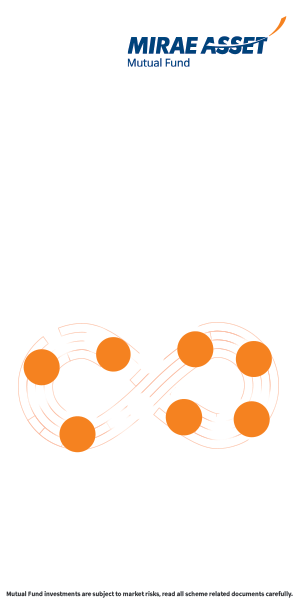How can derivatives be used for Portfolio Hedging

Though derivative trading in India was introduced more than 15 years back, most retail investors perceive derivatives as something very risky. While derivatives can be risky, they can also be used effectively as a portfolio hedging tool.
What are derivatives?
The textbook definition of derivatives is a “security whose price is derived from the underlying security”. In other words, when you are buying or selling a derivative, you are not buying or selling the underlying asset, but an instrument, whose value is derived from the underlying asset. In Indian stock exchanges (like NSE or BSE), there are two forms of derivatives, Futures and Options.
What are Futures and Options?
Futures contract, in very simple terms, is an agreement between the buyer and seller, to sell an asset at an agreed price, on a particular date near the end of the month (also known the F&O contract expiry date). You can be either a buyer or a seller and the stock exchange is the counterparty (seller or buyer, depending on what position you have taken). Futures are marked to market, or in other words are re-priced constantly based on the value of the underlying asset. You can square off your futures position at any time, based on the current value of the futures contract.
An options contract, grants the buyer of the contract, the right to buy or sell the underlying asset at a certain price, but not an obligation to do the same. There are two kinds of options. Call option gives the buyer, the right (but not an obligation) to buy the asset at a certain price. Put option gives the buyer, the right (but not an obligation) to sell the asset at a certain price. An options contract has two important parameters, the strike price and the premium. The strike price of an options contract is the price at which you will buy or sell the underlying asset on expiry of the contract. In futures, both your profits and losses can be unlimited. In options, your profits are unlimited but your losses are limited, only to the premium (price) you paid for the option.
Like futures, option premiums are also marked to market or in other words, re-priced constantly and therefore, you do not need to wait till end of the month to book profits or losses. You can square off your futures position at any time, based on the current value of the options.
Derivatives for Hedging
Investors, who have invested in stocks and mutual funds over the last 10 to 15 years, know that, the one certainty of equity markets is volatility. While we often say that, equity or mutual fund investment should be for the long term, there is no denying volatility is stressful and it can often trigger off panic selling. What does a fund manager do in such volatile markets?
He or she has three options. He or she can sell the stocks in the fund portfolios and sit on cash to avoid further losses. However, if the shares were bought at a higher price, then the loss incurred by the investors would be permanent and detrimental to their long term objectives. The fund manager could sit tight and remain invested till the market recovers. But if volatility persists for a long time, NAV will continue to fall causing notional losses to the investors. But in reality, when the value of investments falls very sharply, investors start redemptions. It is normal human behaviour. When investors redeem, the fund manager has no option but to sell. When large number of investors redeem, it can hurt investors who decide to remain invested, because in such situations, the fund managers may have to sell their best stocks, because he or she may not find buyer for some stocks.
Derivatives offer a smarter alternative to fund managers in such situations to hedge their portfolio losses. Let us assume, you have invested in a diversified equity fund, which has mostly large cap and some midcap stocks. Suppose, the Nifty falls by 10-15%, causing the NAV to fall by around 10% and the fund manager expects it to fall by another 10–15%. The fund manager can sell Nifty futures. If Nifty falls by another 10%, the value of the underlying stocks of the portfolio can also fall by 10%, but the fund manager will make a 10% profit on the Nifty futures. Therefore the fall in the NAV of the fund will be much less. This will reduce notional losses and stress for investors and at the same time, allow the fund manager to hold on to high conviction stock bets, which in the long will create wealth for the investors. However, you must remember that, hedging is a mechanism to prevent losses only; it cannot be used to make money. Profit or loss of a hedged position is less than, the profit or loss of an un-hedged position.
Hedging using derivatives also offers tax efficient solutions to investors with lower risk appetites. Many investors want to invest in equities, but do not want high volatility and are ready to accept lower profits in return. The conventional solution for such investors is to choose an asset allocation between equity and debt that balances risk and return. However, the taxation of equity and fixed income in India is different. Capital gains in equity funds held for a period of more than 1 year are tax free, while that of debt funds held for a period of less than 3 years are taxed as per the income tax slab of the investor.
Some hybrid funds use derivatives to balance the portfolio risk and at the same time, take advantage of equity taxation. Let us understand this will a simple example. Suppose you invest र 100,000 in such a fund. You want a 50:50 allocation to debt and equity, in line with your risk appetite. The fund manager can buy stocks worth र 65,000 and bonds worth र 35,000. This will ensure that the fund enjoys equity taxation, but the risk profile of the fund is not in line with your risk appetite. The fund manager may then sell futures equivalent to र 15,000. This means that, out of your र 100,000 investment, only र 50,000 investment in equity is un-hedged (risky), the balance investment is not risky. If the market falls, the shares in the fund portfolio may make a loss, but you will make a profit on the futures and therefore, your loss will be less. On the other hand, if the market rises, the shares in the fund portfolio will increase in value, but you will make a loss in futures contract and therefore, your profit will be lower. This strategy helps you to reduce the investment risk, while enjoying equity taxation when you make a profit.
Derivatives for Arbitrage
What is Arbitrage? Arbitrage is the opportunity to make risk free profits. In the ideal world, there should not be risk free profits. However, there are market inefficiencies which give rise to arbitrage opportunities. Smart investors take advantage of these opportunities to make profits with minimal or no risk. Suppose the price of the share of a company today in the spot or cash market is र 1,000 and the price of the July contract of the company in the F&O market is र 1010. If you buy 1000 shares of the company in the cash market and sell 1000 futures, you will lock in a gross profit of र 10,000 today itself. On expiry of the July futures contract on the last Thursday of the month, the spot and futures price will converge. The expiry price is irrelevant. You will still make a net profit before other expenses. Let us understand how. Suppose the expiry price is र 1200. You will make a profit of र 200 per share on the shares that you bought or took delivery in the cash market. On the other hand, you will make a loss of र 190 per share in your futures. The net profit for you, before other expenses, will be र 10 per share or र 10,000 on 1,000 shares.
What if, the price of the share falls to र 900 on expiry date? You will make a loss of र 100 per share you bought / took delivery. However, you will make a profit of र 110 per share on the futures. Your net profit per share will again be र 10 or र 10,000 on 1,000 shares.
Therefore, we have seen that, using this strategy you can lock in profits and there is virtually no risk, as long as you can spot the arbitrage opportunity. We gave a simple example. In the practical world, you have to factor in transaction costs like Brokerage, Securities Transaction Tax (STT), Service Tax, etc. Arbitrage funds have multiple benefits:-
- Arbitrage Funds offer the investors to earn short term returns by taking minimal or no risks.
- In volatile market conditions arbitrage funds can provide comparable or even higher returns than low risk liquid funds.
- The biggest advantage of Arbitrage Funds compared to liquid or debt funds is related to taxation. Arbitrage funds are equity oriented funds. Equity funds enjoy substantial tax benefits compared to debt funds, as explained earlier.
Conclusion
We have seen that, many investors are mystified when they hear about derivatives. In this blog post, we have tried to explain how derivatives are very useful portfolio risk management tools. Next time, when you come across a mutual fund scheme, which uses derivatives, hopefully, you will able to understand better, how the fund manager of the scheme is using derivatives to manage portfolio risk or generate returns through arbitrage.
Mutual Fund Investments are subject to market risk, read all scheme related documents carefully.
RECOMMENDED READS
Mirae Asset Global Investments is the leading independent asset management firm in Asia. With our unique culture of entrepreneurship, enthusiasm and innovation, we employ our expertise in emerging markets to provide exceptional investments opportunities for our clients.
Quick Links
- Fund Manager Interview - Mr. Neelesh Surana - Chief Investment Officer
- Fund Review - Mirae Asset Emerging Bluechip Fund : Best Midcap Mutual Fund in the last 6 years
- Fund Review - Mirae Asset India Opportunities Fund: One of the best SIP returns in last 8 years
- Fund Manager Interview - Mr. Neelesh Surana - Chief Investment Officer
- Our Articles
- Our Website
- Investor Centre
- Mirae Asset Knowledge Academy
- Knowledge Centre
- Investor Awarness Programs
Follow Mirae Assets MF
More About Mirae Assets MF
POST A QUERY






